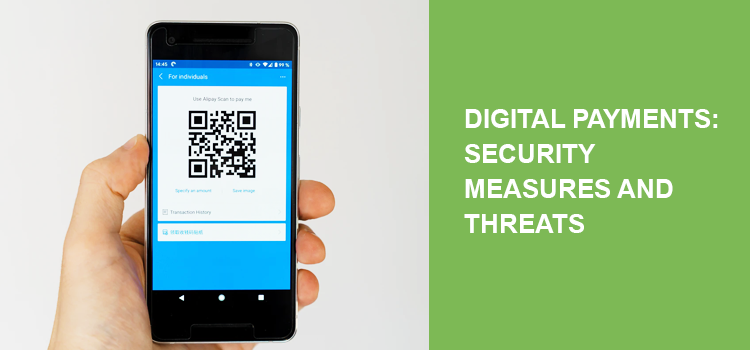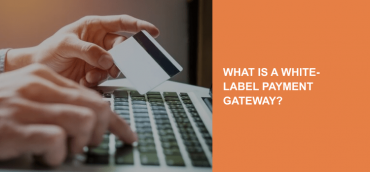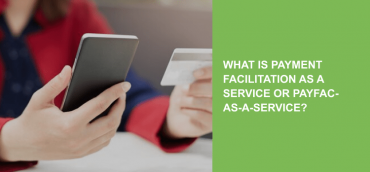The number of digital wallet users is expected to reach 50% of the world’s population by 2024, reports Juniper Research. Besides, according to Statista, people will spend as much as 6.7 trillion USD in digital payments by 2023. Finally, more than a billion people around the world will be using mobile payment apps by the end of that same year, states eMarketer.
All these numbers point out that merchants need to add digital payments to the list of available payment options if they want to cater to a wider audience. And with pandemic disrupting the way we’re paying, there’s practically no way around it.
You might also like 5 Major Fintech Trends 2020
However, merchants must also be aware of numerous threats and fraud trends flourishing in online markets. In this article, we’ll mention the most popular fraud patterns and digital payment threats to pay attention to.
Digital payment threats
- Social engineering.
According to the European Payments Council’s report in 2019, social engineering tops the list of digital payment threats. In its nature, social engineering is “a method of persuasion”. It takes place when a fraudster lures a victim into doing things that would compromise the security of his confidential payment info. This method works because people are inclined to trust others. So, it’s easier to persuade someone to compromise confidentiality than to create state-of-the-art technologies to attack someone’s system or device.
Fraudsters exploit multiple channels to manipulate online victims. These channels include phone calls, emails, and social media platforms.
There are two main social engineering techniques – phishing and scams. They both aim to entice users into sharing their payment credentials. They often use the “emergency” strategy to put psychological pressure on people and push them to carry out actions they would have never fallen for under different circumstances. - Malware.
Malicious software, or malware, refers to any software used to access third-party computers and steal or interfere with sensitive data. It comes in all forms and shapes. And with fraudsters becoming more and more tech-savvy, it’s getting more difficult to identify and prevent malware attacks.
Thus, among the most common types of malware are spyware, adware, Trojan horse, ransomware, fileless malware, and ATPs.
Some software is relatively “safe” for the user aiming only to collect and store data about the user behavior. However, a lot of programs intend to encrypt data and holds it up for ransom.You might also like How to Resolve 91% of Disputes in the Merchant’s Favor
- Mobile cyberattacks.
With a growing dependence of a modern user on a mobile device, cybercriminals are working their way into mobile app fraud. It’s less secure, and therefore, serves as an easy target for fraudsters. In fact, at least 38% of iOS and 43% of Android apps are considered “vulnerable”. Moreover, with mobile devices, the fraudster no longer requires physical access to your smartphone to be able to steal sensitive data.
Unfortunately, most cyber attacks occur due to user inattentiveness or several small deficiencies in different places of the mobile application.
We’ll talk about solutions to this problem later on. But for now, we find it important for our readers to understand where these cyber attacks originate from. - APT.
Some consider APT (advanced persistent threat) a type of malware. And there’s a certain truth to it. APT is an attack on a specific target, be it an individual, a company, or some software. It aims to adapt to the defense techniques and change the technologies on the go.The goals behind the attacks vary. But since most frequently APTs are targeted at government agencies and defense contractors, they’re associated with cyberespionage.
- Cryptojacking.
With cryptocurrencies gaining their momentum these days, cryptojacking is coming on stage. It’s mobile-related and takes place when hackers use someone else’s mobile device for crypto mining without the consent of the said person.Most victims of these threats experience very short battery life, overheating, etc, indicating extreme use of the device by the third party.
- SMS message threat.
It feels like everybody has received an email informing you about a sudden legacy left to you by a late relative somewhere in sunny California. People know all about phishing emails these days. So, they don’t trust them. However, they still believe in the trustworthiness of SMS messages.
The sad truth is SMS messages can be easily spoofed, and now more than ever with the advances of technologies available to the fraudsters. Therefore, users fall victim to smishing when they’re sharing sensitive information with criminals behind SMS messages sent from a payment service provider number. They tend to create the feeling of the urgency of the measure so that the victim is less hesitant to share sensitive data with the hacker.
The threats are too many to count. And continuing growth and development of technology enables the fraudsters to come up with more advanced ways to prey on the less tech-savvy. The good news is that there are ways and measures to prevent these threats.
Digital payment security measures
- Email validation and authentication.
Payment service providers can use these two measures to detect and prevent email phishing and spoofing early on. European Payments Council recommends using SPF and DKIM as prevention measures as well as run frequent awareness campaigns. Informed means armed, and that’s exactly your users need. - Limits on the number of installed apps and cyber hygiene.
Might seem obvious, but with the overwhelming volumes of software we use today, the best way to avoid malware is to limit the number of installed applications. Only download programs from trusted vendors and remember to regularly update it. Outdated apps allow fraudsters to get access to your device with you knowing it. - Monitor your mobile device closely.
Not only this will allow you to notice traces f ransomware otherwise undetectable but also track any suspicious activity on the device pointing to unauthorized usage of your mobile device. And also, stay in touch with your mobile network provider. Especially so, if you notice network connectivity issues or no incoming calls for an unusually long time. - PCI DSS certification.
This security standard is only one of many mandatory requirements for online merchants. It protects the user’s data online. So, if you’re a user, make sure to pay on sites that have this certification in place. If you’re a merchant, reach out to us so we can help you obtain a certificate asap.
These are but a few main digital payment threats and security measures to pay attention to. We’ll talk about this issue more soon. So, stay tuned!




